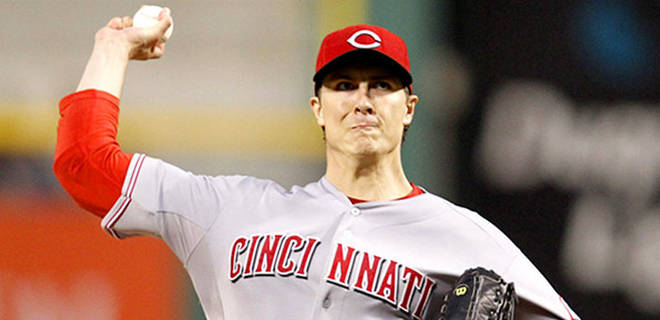Homer Bailey’s 2013 season was the first to place the Cincinatti Reds right hander on the map. A former first round pick, Homer and the Reds never saw the talent manifest in the Major Leagues until 2012, and even then the 3.68 ERA was nothing to write home about. Based just on ERA, Bailey’s 2013 was not that much more noteworthy, however the 3.48 figure was complimented by a career high strikeout rate and career low walk rate that makes the advanced stats shine. Though Bailey’s FIP finished 14th in the National League, his standing among the advanced stat leaders was much higher before four mediocre September starts. As late as August 7th, Bailey was fourth among NL pitchers in WAR and his performances were prompting ESPN writers to call him an Ace. Heading into his walk year, teams will be pondering if the first 5 months of 2013 might represent the new Homer Bailey, or if his poor September is a harbinger of the ups and downs that a team might expect throughout his career. To lend a hand to baseball’s decision makers, we’ll explore the enigma of David Dewitt Bailey here.
Cincinatti Reds fans may realize that Homer Bailey is not in Cincinatti to stay, but as he heads into free agency next winter, he is here to stay in the conversation about who is an “Ace.” Moreover, should he be paid like one?
My attention to Bailey was thanks, initially, to the increase in his velocity vs. 2012. Of the 89 pitchers who pitched at least 120 innings in 2012 and 2013, Bailey’s fastball increase of 1.7 mph was the highest in baseball. Of note, Felix Doubront, David Price, and Matt Moore all saw more dramatic shifts in average fastball velocity, but in the wrong direction with each losing at least 1.8 mph from their staple pitch. Bailey’s juiced up velocity contributed to his increased strikeout rates and his career high swinging strike rate. I wrote about how swinging strike rate may foreshadow future results here.
If Bailey’s new-found velocity and the corresponding upticks in swinging strike and strikeout rates are here to stay, a case could be made that 27 year old Bailey will remain in the “Ace” conversation for the next few years. I am wary of one year upticks in velocity with no corresponding anecdotes about different workout regimens or “overhauled mechanics.” However, this velocity from Bailey is not unprecedented. In 2009, Bailey’s average fastball was the same 94.1 that it was in 2013. (Lest you think that 2012 was some sort of down year and that that was the real outlier contributing to this uptick in velocity, all other years were between 91.7 and 92.4.)
Which Homer Bailey fastball is the real one? To find out, teams will stay tuned for 2014. If the velocity from 2009/2013 is there, I say Baily should be a rich man next winter. If it’s something closer to 2008/2010-2012, Bailey should will still be a rich man, but with one fewer zero on his monthly checks.
Apparently though, there was more to Bailey in 2013 than just velocity. According to that same ESPN article I linked to earlier, Bailey began throwing a split fingered fastball in 2013. I was unable to confirm that story, but found a number of others citing Bailey’s new devastating splitter in 2009. Did Bailey revert to the 2009 grip in 2013? Is that why his success and velocity both saw spikes in those years? I have no idea. Someone should SnapChat Bailey and find out. If that’s the case, it’s a big deal. A dirty split is often the hallmark of linear relationship between longevity and success. (See: Roger Clemens, Koji Uehara for example.)
We will end with potentially the most obvious point: Can a pitcher named Homer overcome the misfortune of his namesake? In the grand history of baseball, there have been 10 other players named Homer. Bailey threw more innings in 2013 than all of them combined. The pitching prowess that this Homer is displaying is unprecedented in the history of Homers. Simply, we do not know if pitchers named Homer can sustain success.
Bailey’s 2014 showing will be greatly important in determining not just his salary for future years, but also his rightful place in the minds of baseball fans. Does he belong in the conversation as an Ace or is he Joe Blanton 2.0? His velocity in Spring Training very well may tell us all we need to know.
-Sean Morash
Stat of the Day: Home Run Baker is a Hall of Fame Third baseman. He lead the league with 11, 10, 12, and 9 home runs from 1911-1914. He was caught stealing 26 times in 1912.


















